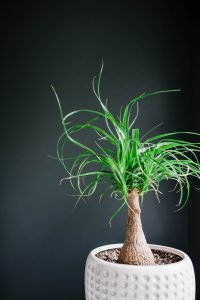There has been a boom in indoor plants and we are loving it! Not only do indoor plants enhance the overall appearance of your space but there are also a number of benefits. From boosting moods, increasing creativity, reducing stress, and improving air pollutants, today we are going to discuss the benefit of indoor plants!
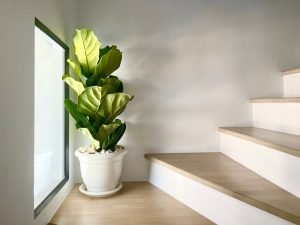 Why Indoor Plants?
Why Indoor Plants?
Indoor plants don’t just look good, they can make us feel good, too. Studies have shown recently that indoor plants have a number of benefits including:
- Boosting your mood, concentration, creativity, and productivity
- Reduce your stress and fatigue
- Some evidence to show an improvement in sore throats and colds
- Help absorb toxins
- Increase humidity
- Produce oxygen
- Great as part of therapeutic care
But you don’t have to be a scientist to know that plants look attractive. And that beauty goes beyond the aesthetic. They play a vital role in providing a pleasant and tranquil environment to move, work or relax. This in turn makes us more relaxed and happier. And our homes look fantastic, too!
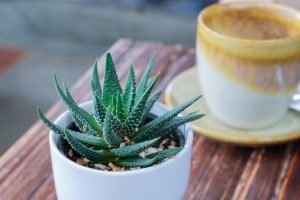 Therapeutic Benefit of Indoor Plants
Therapeutic Benefit of Indoor Plants
Humans have a long tradition of “going back to nature” when we feel sick or low. Even in the Victorian era, people would often visit the countryside, national parks and the beach to feel better. this is because, when we get in touch with nature, we reduce mental fatigue and stress. This in turn increases relaxation and even self-esteem.
The benefit of indoor plants is that even brief exposure to nature makes us more altruistic and cooperative, and touching real plants and foliage elicits an unconscious calming effect. Some studies have even shown that in offices where indoor plants are present, work performance increases, staff well-being improves, and there are less sick days than offices without plants.
Plant care can be a rewarding, solo, endeavour or a social one if you find some fellow plant lovers. Regardless, that feel-good feeling plants give doesn’t go unnoticed. The more time we spend around plants, the more calming we can find life. It is also calming to care for plants and their growth is rewarding.
They are also a key design element to the modern home, contributing warmth and style to any space. They are the perfect architectural element and anchor a space in an organic way. No matter your personal style and design, plants are a flexible design choice. And with thousands of possibilities, colours and varieties, it’s no wonder they fit anywhere.
 Improve Air Quality
Improve Air Quality
As we all know by now, pollution levels are on the rise around the world. And this is especially true if you live in a busy, dense city and encounter pollution every day. It wreaks absolute havoc on your hair, skin and the air we breathe. And pollution isn’t solely on the outside. It can be in places we call work and home. This is known as Sick Building Syndrome and describes the symptoms experienced by otherwise healthy people working in large, commercial buildings. This includes things like:
- Sudden allergies
- Eye irritations
- Nose irritation
- Throat irritation
- Respiratory and sinus congestion
- Nervous system disorders
These symptoms tend to go away if you don’t visit the building for a time, but will come back on re-entry to the building. This is caused by indoor air pollution from:
- Synthetic building materials
- Airborne moulds
- Viruses
- Pollutants
- Reduced air circulation
- Energy efficient constructions
This causes the release of toxins into the air. And it isn’t just commercial buildings. Homes are also full of pollutants, especially if we live and work from home.
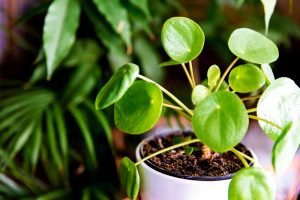 How Plants Improve Air Quality
How Plants Improve Air Quality
Because plants have large surface areas and exchange gases and water with their surroundings, they can help tackle some of these issues. This particular benefit of indoor plants includes:
- Reducing carbon dioxide levels
- Increase humidity
- Reduce the levels of certain pollutants
- Keep air temperatures down
- Reduce airborne dust levels
Reduce Sense and Improve Well-Being
Most of us instinctively know that being close to plants and greenery makes us more at ease with our surroundings. We experience less stress when there are plants around us. Buildings feel quieter and more relaxed but, at the same time, more stimulation and interesting. As a result, indoor plants have a dramatic effect on our wellbeing.
As discussed above, people in offices filled with plants are more productive, take fewer sick days, make fewer mistakes and are happier in general. These benefits are also apparent at home and even in hospitals. Patients benefit greatly from being more in touch with nature. And students can perform better in environments improved with plants.
Battle Noise Pollution
Airborne pollution is not the only pollution we encounter every day. Noise pollution is something that affects us more and more as our cities grow and expand, and our population becomes more dense. Plants have long been used to reduce noise for busy roads. More recently, their ability to reduce background noise levels in buildings and homes has been studied.
One benefit of indoor plants that that the plants and their leaves absorb, reflect, and diffract background noise, thereby making the environment more comfortable for those in the building. They are also particularly good at absorbing high frequencies. Plants absorb sound best in acoustically live spaces, like those with hard surfaces.
Some of the Best Indoor Plants
Below are some of our favourite indoor plants!
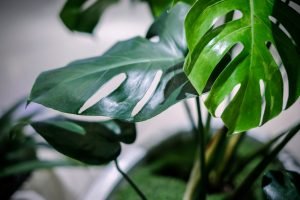
Swiss Cheese Plant (Monstera Deliciosa)
We’ve all seen swiss cheese plants. They’re all over the internet and are one of the most popular indoor plants at the moment. They have lush, green leaves with distinctive holes making a stunning statement in any room. These plants can also grow to fit any space. Monstera prefer a warm climate away from direct sunlight and benefit from a regular cleaning with a soft, damp cloth. Monstera are climbing plants so you will need to provide some kind of stake or trellis for support.
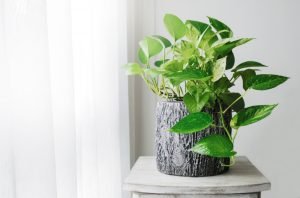
Golden Pothos/Pothos (Epipremnum Aureum)
Golden pothos are fast-growing and a very forgiving vine, suited to any position in your home. They can be potted in hanging baskets and even glass vases, making them low maintenance and absolutely stunning.
The leaves are waxy and heart shaped with colouring dependant on the cultivar. Marble Queen has more of a cream and greyish-green colouring, Wilcoxii is mottled white and green, Neon is a shade of bright, light green-yellow, and Tricolour have green leaves with yekkow, light green and cream dappling.
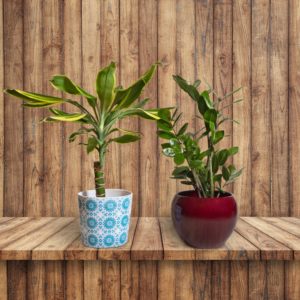
Mass Cane (Dracaena Massangeana)
Mass Cane is popular among beginner green thumbs and is seen as an office staple thanks to its hardy nature. It grows between 1.2-1.8m with stalky stems and long, green leaves featuring light yellow and green stripes running through them. It is a great option if you’re looking for a large plant.
Placed in indirect bright light but it can tolerate low light. It is, however, incredibly toxic for dogs and cats, so best for a pet free home only.
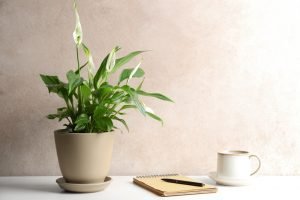
Peace Lily (Spathiphyllum)
The peace lily has long been a popular house plant, even more so since NASA listed it as one of the best air-purifying plants. It has glossy, dark green foliage and stunning white flowers, usually growing between 45-65cm tall. They are tropical plants that thrive in bright, indirect light. It can handle low light but might not bloom well.
This plant is also poisonous when eaten so should be avoided if you have pets or children.
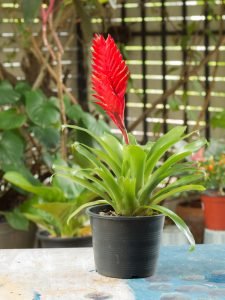
Bromeliad
Although regarded as an advanced plant, these beautiful, coloured rosette-forming perennials are actually easy, low maintenance houseplants. Indoors they need medium to bright light (but not direct) and do well in shallow pots with fast drainage.
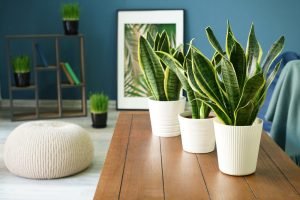
Snake Plant (Sansevieria)
Coming from Africa, the Snake Plant is a low-maintenance houseplant loved by amateurs and professional plant carers alike. The Snake Plant is an upright, succulent plant that can grow to two metres and is extremely hardy. It takes a lot to kill a Snake Plant, so this is a great option for those who are dipping their toe into the plant world. The plant should be placed in direct sunlight for several hours a day though it will tolerate shade. Growing in shade, however, means the plant will take longer to grow.
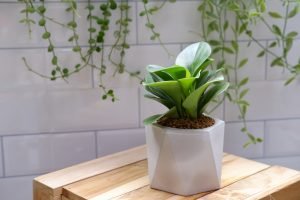
Rubber Plant (Ficus Elastica)
The Rubber Plant is a perennial favourite for indoor plants. They have been popular for years and is currently on trend again as a houseplant. With dark, shiny leaves in green and burgundy it can stay small in a little pot or encouraged to grow into a large, indoor tree. It is hardy, temperature resilient and likes bright, indirect light.
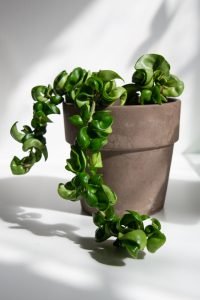
Hoya
This is a stunning, tropical, indoor plant also known as a wax plant due to its thick, waxy leaves. This is a classic indoor plant that creates beautiful, porcelain-like fragrant flower clusters. Though many claim it is the easiest indoor plant to grow, each variant has specific likes and dislikes. So it is important that you research your variant before buying to get specific care guides.

ZZ Plant (Zamioculcas Zamiifolia)
The ZZ Plant has been around for centuries. It originates from Africa but Dutch nurseries decades ago saw its potential. And since 1996 ZZ Plants have entered homes, offices and hearts round the world. It has wide, attractive, dark green leaves and tolerates neglect, drought and low-light conditions. The waxy, smooth leaves reflect sunlight and brighten rooms. It grows slowly in height and width. It, along with the Peace Lily, is also a NASA recommended air purifier and specifically adept at removing copious amounts of toxins from the air.


